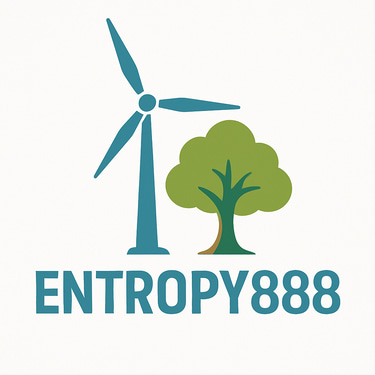Bitcoin Mining with Wind and Solar: A Complete Guide
Bitcoin mining has always been an energy-driven business. The search for the cheapest electricity determines where mining farms are built and whether they succeed. In recent years, renewable energy — especially wind and solar — has become one of the most promising solutions. Not only does it reduce costs, it also makes mining environmentally sustainable. In this guide, we’ll explain how wind and solar can power Bitcoin mining, what challenges exist, and why they might represent the future of the industry.
RENEWABLE ENERGY & BITCOIN MINING
Chris Boubalos
9/7/2025
Why Use Wind and Solar for Bitcoin Mining?
Abundant and Scalable
Wind and solar are the fastest-growing sources of energy worldwide. They can scale from small farms to massive utility projects.Low Marginal Cost
Once the infrastructure is built, the cost of producing an extra unit of power is almost zero. This makes them ideal for energy-intensive processes like mining.Sustainability and Public Perception
Mining powered by fossil fuels faces criticism. Using clean energy improves reputation and makes partnerships with investors easier.
Wind-Powered Mining
Wind farms often generate more electricity than local grids can absorb, especially during high-wind periods. Instead of shutting down turbines, operators can:
Install containerized miners directly on-site.
Sell excess power instantly by converting it into Bitcoin.
Balance their production by using mining as a flexible energy sink.
Example: A 50 MW wind farm that occasionally curtails 10 MW could dedicate that surplus to mining, generating steady revenue instead of losing value.
Solar-Powered Mining
Solar energy peaks during the day when demand may not always match supply. Bitcoin miners can:
Operate primarily during sunlight hours, scaling down at night.
Pair solar with battery storage to extend mining into evening hours.
Use hybrid systems (solar + wind or hydro) to balance fluctuations.
Example: A 20 MW solar park can dedicate 5 MW of peak surplus to mining during summer months, turning wasted electrons into digital assets.
Key Challenges
Intermittency
Wind and solar are not constant. Mining operations need either battery storage or flexible deployment (moving containers to different farms).Infrastructure Costs
Building renewable farms requires upfront capital. However, many existing projects already produce surplus power.Grid Regulations
Local laws may restrict how independent producers sell or allocate energy. Partnering with farms directly often solves this issue.
Benefits for Energy Producers
New Revenue Streams – Monetize electricity that would otherwise be wasted.
Grid Support – Mining can act as a “buyer of last resort,” stabilizing local energy markets.
Long-Term Partnerships – Energy companies gain predictable income from miners.
The Future: Hybrid Mining Systems
The strongest setups combine multiple renewables. For example:
Wind + Solar: Wind is often stronger at night, while solar peaks during the day. Together they complement each other.
Hydro + Solar: Hydro offers baseload stability, while solar adds peak capacity.
Renewables + Grid: Miners can switch between grid and renewables depending on availability and price.
Conclusion
Wind and solar are no longer just “green alternatives” — they are becoming central to profitable Bitcoin mining. By placing mining containers next to renewable farms, operators unlock efficiency, sustainability, and flexibility.
Entropy888 specializes in renewable-powered mining solutions. We believe the future of Bitcoin is clean, mobile, and profitable.
Contact
© 2025. All rights reserved.
Christos Boubalos - Business Development Lead +306972 885885 mob/whatsapp
christos@entropy888.com
-------------------------------------------
General Enquiries - info@entropy888.com
